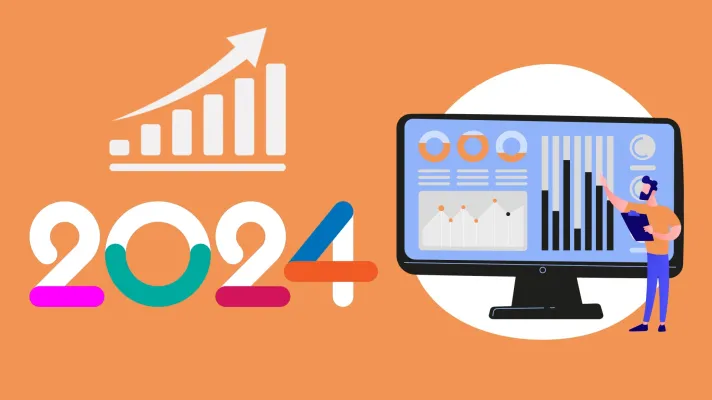
In today’s digital environment, user experience (UX) and user interface (UI) design are crucial elements of successful and engaging websites and applications. UX and UI refer to two independent phases of the design process, despite the fact that they are usually used synonymously.
1.Understanding UX Design
1.1 What is UX Design?
UX design describes the process of raising user pleasure by boosting usability, accessibility, and general user-product interaction. In order to develop engaging and intuitive user experiences, it includes a variety of components such as user research, information architecture, wireframing, prototyping, and testing.
1.2 The Importance of UX Design
UX design is important because it focuses on comprehending consumers’ requirements and objectives, enabling designers to develop products that are not only aesthetically pleasing but also useful and effective. UX design improves user pleasure, fosters client loyalty, and boosts conversion rates by offering seamless interactions and simple interfaces.
1.3 Key Components of UX Design
The key components of UX design include:
User Research: Gathering insights into user behavior, preferences, and pain points to inform design decisions.
Information Architecture: Organizing and structuring content in a way that is easy to navigate and comprehend.
Wireframing: Creating low-fidelity layouts to establish the basic structure and flow of the product.
Prototyping: Building interactive prototypes to test and refine design concepts before development.
Usability Testing: Conducting user tests to evaluate the product’s usability and identify areas for improvement.
1.4 UX Design Process
The UX design process typically involves the following stages:
Research: Understanding the target audience, their needs, and the problem the product aims to solve
Analysis: Analyzing the collected data and translating it into actionable insights.
Ideation: Generating ideas and conceptualizing design solutions.
Design: Creating wireframes, prototypes, and user flows to visualize the user experience.
Testing: Conducting usability tests to validate the design and gather user feedback.
Iteration: Incorporating user feedback and refining the design based on the testing results.
2. Exploring UI Design
2.1 What is UI Design?
The visual appeal and interactive components of a digital product are the main focus of UI design. Its main objective is to design aesthetically beautiful user interfaces that allow for effective user interactions. UI designers employ typography, colour palettes, iconography, and other design components to create visually appealing and engrossing user interfaces.
2.2 The Significance of UI Design
UI design is crucial if you want to draw users and give them a satisfying and appealing experience. User-friendly, aesthetically pleasant, and consistent with the overall company identity are the goals when designing user interfaces. A successful user interface (UI) can boost user satisfaction and engagement and contribute to the success of a digital product.
2.3 Key Components of UI Design
The key components of UI design include:
Visual Design: Crafting visually appealing interfaces using typography, color schemes, imagery, and iconography.
Interaction Design: Defining how users interact with the product through buttons, menus, animations, and other interactive elements.
Responsive Design: Ensuring the interface adapts seamlessly to different devices and screen sizes.
Style Guides: Establishing design guidelines and standards to maintain consistency across the product.
2.4 UI Design Process
The UI design process typically involves the following stages:
Research: Understanding the brand, target audience, and design requirements.
Wireframing: Creating low-fidelity representations of the interface layout and structure.
Visual Design: Crafting the visual elements, including color palettes, typography, and iconography.
Prototyping: Building interactive prototypes to showcase the visual and interactive aspects of the design.
Testing: Conduct user tests to gather feedback on the visual appeal and usability of the interface.
Refinement: Iterating and refining the design based on user feedback and stakeholder input.
3. Bridging the Gap: The Relationship between UX and UI
3.1 Collaboration and Communication
Despite being distinct academic disciplines, UI and UX design are closely related. UX and UI designers must collaborate and successfully communicate in order to produce a seamless and integrated user experience. While UI designers transform these findings into aesthetically pleasing and usable interfaces, UX designers offer insights into user behaviour and requirements.
3.2 User-Centered Design
The creation of user-centered experiences is a common goal of both UX and UI design. While UI design converts these insights into aesthetically pleasing and user-friendly interfaces, UX design concentrates on understanding users’ wants, goals, and pain areas. UX and UI designers can work together to produce products that exceed consumer expectations and provide first-rate user experiences.
3.3 Coherence and Consistency
Coherence and consistency are crucial for a successful UX and UI design. UX designers ensure consistency by creating user flows and information architectures that facilitate seamless navigation. UI designers maintain visual coherence by using consistent typography, color schemes, and design elements throughout the interface. The synergy between UX and UI design ensures that users have a consistent and coherent experience across different touchpoints.
4. Key Differences Between UX and UI Design
4.1 Focus and Scope
By considering the needs, difficulties, and goals of the user, UX design aims to enhance the user’s overall experience. It addresses a wider range of issues in addition to user research, information architecture, and usability testing. In order to create aesthetically beautiful and user-friendly interfaces, the focus of UI design is on the visible and interactive elements of the interface.
4.2 Skill Sets and RolesUX designers require skills in user research, information architecture, interaction design, and usability testing. They work really hard to create intuitive experiences and understand user behavior. But interface designers also need to be knowledgeable in typography, color theory, visual design, and visual design. They work very hard to create user interfaces that are aesthetically pleasing and consistent with the brand.
4.3 Tools and Techniques
UX designers use tools such as user research methods, wireframing software, prototyping tools, and usability testing platforms. They employ techniques like user interviews, persona creation, and user testing. UI designers use design tools like Adobe XD, Sketch, or Figma to create visually appealing interfaces. They employ techniques such as visual design principles, typography, and color theory.
4.4 User Interaction and Visual Appeal
UX design primarily focuses on enhancing user interactions and ensuring usability. It works to develop interfaces that are user-friendly, efficient, and organic. In order to build aesthetically beautiful interfaces that engage users and strengthen the brand’s visual identity, UI design places a strong emphasis on aesthetics and visual appeal.
5. Conclusion
Together, UX and UI design are two distinct yet interconnected professions that create outstanding digital experiences. UX design is concerned with understanding user demands and improving the overall user experience, whereas UI design is concerned with producing visually beautiful and user-friendly interfaces. UX and UI designers may be able to bridge the gap between user needs and aesthetically pleasing design by collaborating, developing goods that capture and engage consumers






